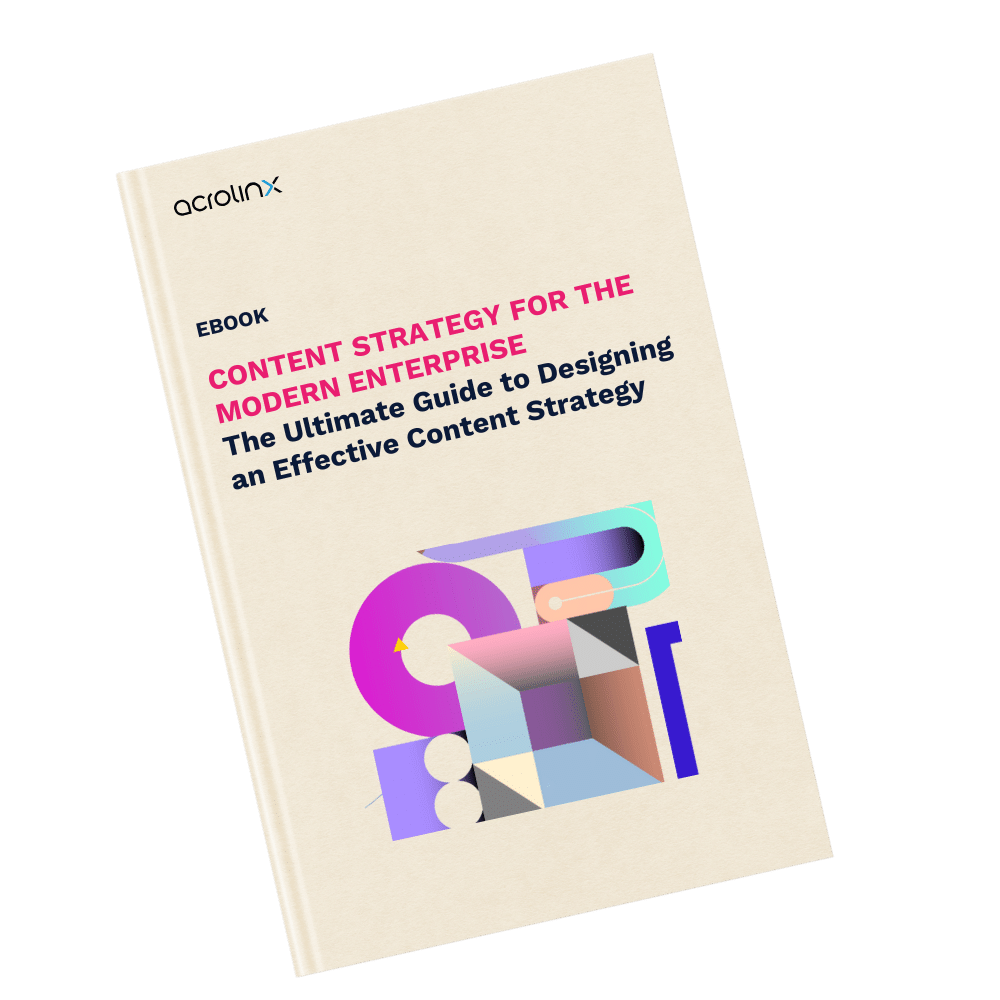
Did you know that creating content at scale is often riddled with inefficiencies for many large enterprises? The truth is, that inefficient content production frequently results in higher costs and longer timelines, delaying the delivery of content to customers. Over time, this approach hampers content efficiency, reduces output, extends the time to market, and creates unnecessary strain on your business operations.
What’s content efficiency?
Content efficiency is the superhero of content creation. It’s about getting the most bang for your buck, or should we say, the most impact for your words!
Content efficiency for enterprises means creating content that maximizes impact and effectiveness while minimizing the resources and time required. This includes strategies such as repurposing content across different platforms, creating high-quality, evergreen content that remains relevant over time, and using data to tailor content to the specific needs and interests of the target audience. By focusing on content efficiency, enterprises optimize their content creation processes, increase engagement, and achieve their goals in a more streamlined and cost-effective manner.
How to measure content efficiency?
It’s one thing to know what content efficiency is, and another to measure it. Measuring content efficiency involves tracking KPIs such as engagement metrics, conversion rates, and the cost per acquisition. By analyzing these metrics, enterprises can assess the effectiveness of their content in achieving their goals.
Additionally, using tools like Google Analytics and content governance insights can provide valuable data on content performance. By continuously monitoring and analyzing these metrics, enterprises can gain insights into what content resonates with their audience and make informed decisions to optimize their content strategy for greater efficiency.
Key challenges behind inefficient content production
So what exactly is preventing enterprises from being efficient content creators? There are lots of reasons, but in this post we’ll look at some of the most common systemic issues companies typically face and provide you with content creation tips.
Silos impact content efficiency and production
In an ideal world, all of your content would be centrally coordinated or created by a defined team. But in most cases, that’s simply not the reality. Instead, you’ve typically got different teams, business lines, industry experts, and offices that all have their own unique approach to creating the content they need without much regard for each other.
Unfortunately, when lots of different teams create content without any kind of centralized oversight, it becomes an inefficient process. You miss out on economies of scale, meaning that it just takes longer and costs more. Not only that, you’re more likely to find teams creating duplicate content and ending up with content of varied quality that has the potential to undermine your marketing and brand. And unfortunately, lots of that content never gets used and simply goes to waste.
Experts waste time on low-Value tasks
Your experts are your subject matter experts (SMEs) who are essential for creating high-impact content that’s both technically accurate and provides value to your audience. It’s great to tap into their knowledge and to get their help writing and editing on specific topics, but given that they’re expensive resources, it’s important to manage their time carefully.
Yet all too often, SMEs wind up editing their company’s content not to make substantive changes, but rather to correct grammatical issues, fix spelling mistakes, or make stylistic changes. That’s obviously not the best use of their time and a sure fire way to exponentially drive up the true cost of creating content.
Burned-out editors slow down content life cycle
In-house editors are great resources. They serve as a critical stopgap by making sure that all of the content they review is ready for prime time. But the problem is that they’re expensive and, unless you hire them in droves, they probably won’t have the capacity to review all of your company’s content.
Before using Acrolinx, at large enterprises like Microsoft for example, editors were only able to review one percent of the company’s total content output. It simply wasn’t scalable and created considerable bottlenecks. Given the demand being placed on editors’ time, the review process was adding days or even weeks to the content creation process.
Poor content raises translation costs
Global enterprises need a content strategy that delivers for global audiences. That means translating one piece of content into lots of different languages. While that can be a costly endeavor in the best of circumstances, that’s especially true if the source content you’re beginning with isn’t well written. If that content is unnecessarily wordy, for example, it means you’ve got extra words to translate that don’t add any value to the end content, thus driving up costs. And if the writing is unclear, the translators have to guess at the meaning, which inevitably makes the process take longer, while reducing accuracy.
For companies that need content in many different languages, having low-quality source content can be a real problem, resulting in delays and unnecessarily high translation costs.
What’s preventing you from producing content efficiently?
There are lots of reasons why content creation at your company isn’t as efficient as it should be. And while that might not matter when you look at any one individual piece of content, when you think about all of the content your company creates collectively in any given year — from blog posts to social media to digital content to technical product content and beyond — the scope and scale of the problem begins to take shape.
Ultimately, if you want to create efficiencies, you need ways to govern the content creation process so that it’s a streamlined process. One way to achieve this is by using the right content governance technology. Doing so will allow you to automate essential parts of the creation process like applying quality control writing standards. In that way, you can save time and money by allowing people to focus on higher-value work. That’s a win-win for everyone involved.
Easy ways to avoid writing mistakes
Creating content efficiently in an enterprise context is facilitated by utilizing a content governance software, like Acrolinx. This type of software streamlines the content creation process by aligning content to your writing standards, providing editing guidance to writers, and impoving overall content quality. Request a demo to learn more about how Acrolinx can help your enterprise create content efficiently.
Are you ready to create more content faster?
Schedule a demo to see how content governance and AI guardrails will drastically improve content quality, compliance, and efficiency.
The Acrolinx Team





